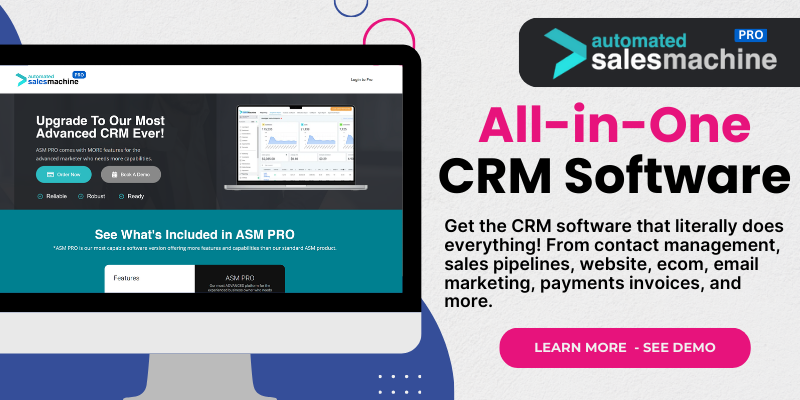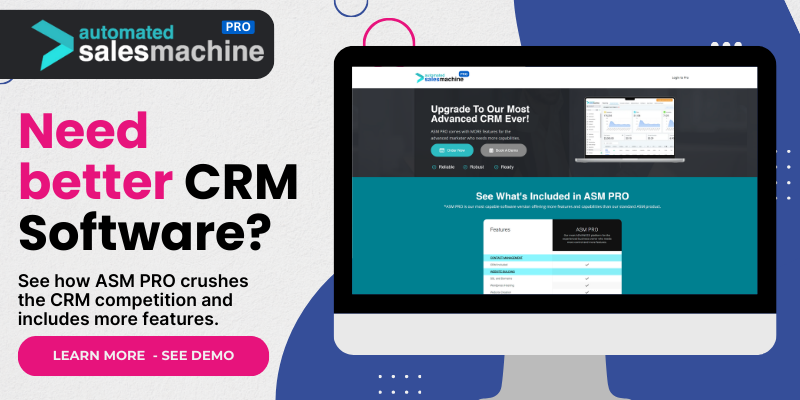Understanding What CRM Automation Is
Defining CRM Automation
First and foremost, let’s break it down. CRM stands for Customer Relationship Management, and automation refers to the use of software to streamline tasks that are usually done manually. In my experience, the magic of CRM automation lies in how it manages data and interactions with customers, filtering out the noise and providing clarity. It handles the stuff you’d rather not spend hours on, making your life way easier!
Think of it as your digital assistant that never sleeps. From sending emails to tracking customer interactions, CRM automation works in the background, letting you focus on what truly matters: building relationships. In a world where time is money, this kind of tech is a game changer.
By adopting CRM automation, you can transform the way you manage customer interactions, leading to more time for strategy and creativity. And let’s be real, who doesn’t want more time to think outside the box?
The Role of Automation in CRM
CRM automation isn’t just about making things faster; it’s about making things smarter. One of the big wins here is the ability to personalize communication based on customer behavior. How cool is that? Rather than sending generic emails, you can tailor messages based on what your customers are actually doing.
Additionally, automation has this fantastic knack for reducing human error. We all slip up occasionally, but when you automate tasks like data entry or follow-up reminders, you significantly lower the chances of missteps. It’s kind of like a safety net for your business operations.
In my experience, the more I used CRM automation, the clearer my insights became. I could track customer journeys with ease, which enabled me to adjust my strategies efficiently. This clarity can boost your confidence in decision-making, leading to greater success overall.
Challenges You Might Face
However, I would be remiss if I didn’t highlight some hiccups along the way. One of the first challenges I faced was the learning curve associated with new software. It can feel overwhelming initially, especially with all the features offered. But don’t let that discourage you!
Another common roadblock is data quality. You can automate all you want, but if your data is outdated or incorrect, you might as well be throwing darts blindfolded! Keeping your data clean and consistent should be a priority.
Lastly, there’s often the fear of becoming too automated and losing the personal touch. While automation helps you streamline processes, remembering to maintain that human connection is key to real success, as people still crave authentic interactions.
Key Benefits of CRM Automation
Saving Time
Let’s talk about the major perk: time-saver extraordinaire! You know how it is—between meetings and reports, time can literally slip through your fingers. Automation steps in to streamline these tasks, allowing you to focus on strategic initiatives instead of mundane chores.
From automatic data entry to scheduled email campaigns, CRM automation does the heavy lifting for you. For instance, scheduling emails to go out at optimal times means I can set it and forget it, ensuring my communications reach customers when they’re most engaged.
In my world, freeing up time means more opportunities to innovate and be proactive. It’s a fantastic feeling to know you have this powerful tool helping you navigate the whirlwind that can be a busy workday.
Improving Customer Insights
Another sweet spot of automation is enhanced customer insights. You can track interactions, purchases, and feedback with ease. This data is gold! It allows you to segment your audience and tailor your marketing efforts accordingly. Trust me, you want to speak directly to your customer’s needs, and automation can help you get right to the heart of that.
By understanding your customers more deeply, you can make data-driven decisions that truly resonate. It’s a satisfying cycle; the more you know, the more you can engage, and the better your outcomes will be.
Every time I dive into this data, I feel like a detective cracking a case. It empowers me to refine my strategy and stay ahead of the game. Those insights can mean the difference between a hit and miss in campaigns!
Enhancing Customer Relationships
Last but certainly not least, let’s discuss how CRM automation enhances relationships. Automating follow-ups and personalized messages shows your customers that you care, even when you’re not right there to communicate. It builds trust and reliability—key factors in customer loyalty.
One way I’ve found to be effective is sending out thank you notes or product recommendations automatically after a purchase. This small gesture, enabled by automation, keeps my brand fresh in customers’ minds and shows that I value their business.
Consistent engagement through automation also helps me maintain relationships over time without overwhelming myself with manual tasks. It’s a win-win that elevates customer satisfaction and loyalty!
Choosing the Right CRM Automation Tool
Assessing Your Needs
When it comes to choosing the right CRM automation tool, first things first—know your needs. What are you trying to streamline? Whether it’s managing contacts, marketing, or customer service, identifying your core requirements is essential. I always start with a checklist of what features are non-negotiable.
After that, I do my due diligence by researching various options to see how they align with my specific goals. It might feel like a lot at first, but it’s crucial to find a tool tailored to your business needs. There’s no point in shelling out cash for something that doesn’t fit!
In my experience, spending extra time upfront on this step pays off tenfold down the road. You want to find something that grows with you instead of becoming a bottleneck.
Evaluating User Experience
Next up, let’s chat about user experience. When testing different CRM automation tools, I always pay attention to how user-friendly they really are. You don’t want to face an uphill battle every time you try to navigate a complicated interface.
Look for platforms that have a short learning curve, solid customer support, and helpful resources. A good vendor will provide training and materials to ease you into using their product. I can’t stress enough how important this has been for my success.
The smoother the user experience, the more likely you and your team will adopt the tool wholeheartedly. And you all know what that means—better execution of your automation strategies!
Integrations Are Key
Last but certainly not least, let’s talk integrations. Your CRM tool needs to work with other software you’re using. So, whether it’s your email provider, project management software, or social media platforms, integration capabilities are a big deal.
From my experience, when a CRM integrates seamlessly with existing tools, it amplifies the efficiency of workflows. Imagine the ease of having everything in one place instead of jumping between various platforms; it’s a game changer!
Before committing to a CRM, I always check integration options because it slots right into my workflow and allows me to fully harness the potential of automation.
FAQs
1. What is CRM automation?
CRM automation refers to leveraging technology to automate repetitive tasks in customer relationship management, allowing businesses to streamline operations, enhance efficiency, and focus on building customer relationships.
2. What are the main benefits of implementing CRM automation?
The main benefits include saving time, improving customer insights, enhancing customer relationships, and reducing human error in processes. This ultimately leads to more efficiency and better service.
3. Can CRM automation replace human interactions?
While CRM automation can streamline communication, it shouldn’t replace human interactions entirely. The aim is to enhance productivity while still maintaining authentic connections with customers.
4. How do I choose the right CRM automation tool?
Assess your business needs, ensure user-friendliness, and check for integration capabilities with other tools you use. This can help you find the perfect fit for your organization.
5. What challenges can I expect when implementing CRM automation?
Common challenges include a learning curve when adopting new software, maintaining data quality, and balancing automation with personal touch in customer relationships.

